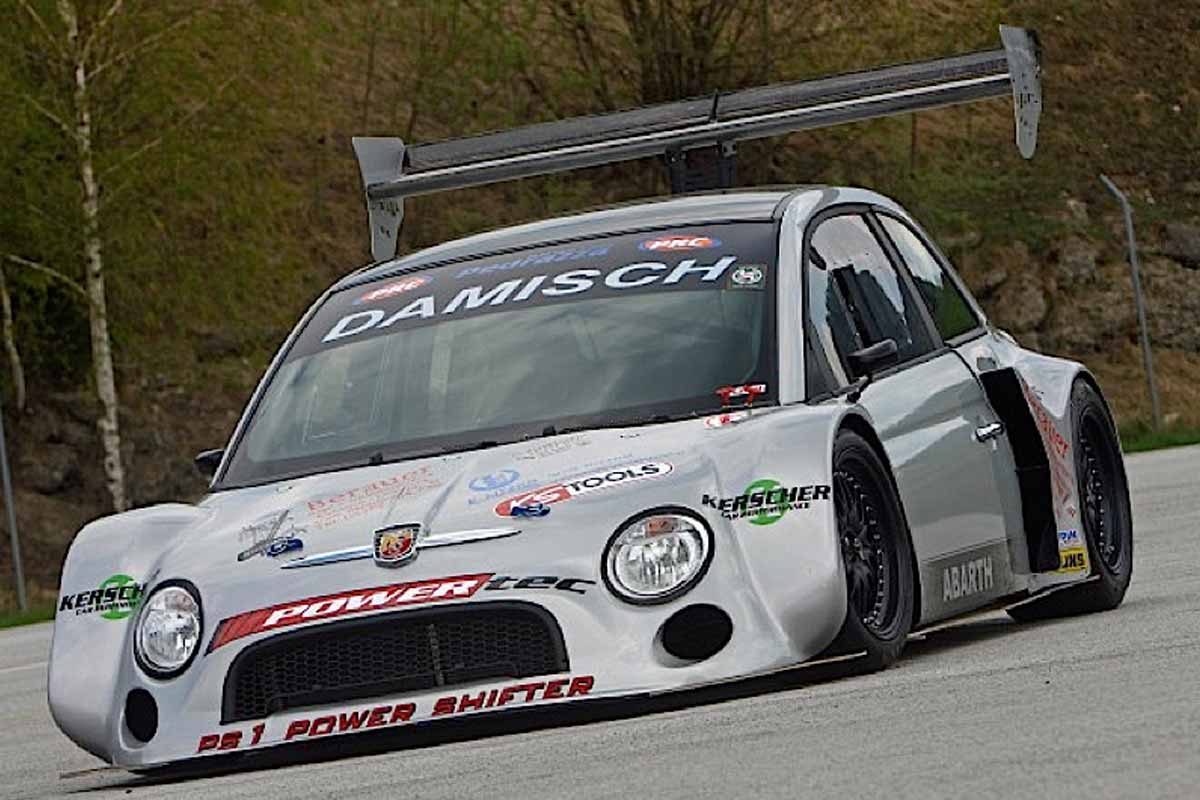The Fiat 500 can be a real little bombshell on the racetrack. Of course, we're talking about the first generation, the model of the 50s and 60s, and the ultra-prepared versions transformed by Abarth, with their noisy exhausts and souped-up engines that required the rear hood to be opened, real little terror on the racetrack, sometimes humiliating much bigger and more powerful cars. The new Fiat 500, which came out in 2007, hasn't had the same sporting career, although there are also Abarth versions.
Even so, a few examples were entered into competition in various categories. Romeo Ferraris, for example, developed very powerful versions. But what we see today is nothing like that.
500 on steroids

Hillclimbing is a tuner's paradise. It's a bit of a mechanical Frankenstein's paradise. You can do pretty much whatever you like in the experimental vehicle class: take chassis as you like and put whatever engine you like in it. Fiat 500s of all generations, but also Fiat 124s, are frequently used as silhouettes to cover prototypes, each more improbable than the last.
One of the craziest "Fiat 500 hillclimbs" was undoubtedly that of the late Georg Pacher. As you can see from the photos, it has a very spectacular aerodynamic kit, straight out of Pikes Peak, and above all a V8. Yes, a V8 in a Fiat 500, you can imagine that this required a major transformation of the basic chassis.

Incidentally, we don't think there are many Fiat parts in this car. The chassis is a tubular steel trellis. All the aesthetic elements of the 500 have been brought closer to the ground, and the emblematic shape of the roof has been retained, which is appreciable.
The work was carried out by PRC, a.k.a. Pedrazza Racing Cars, an Austrian manufacturer of circuit and hill-climbing racing cars. Pacher had first built a proto with a Puch TR5 silhouette, the first-generation Fiat 500 that had been manufactured under license in Austria until 1975. The latest prototype was based on the 2007 Nuova 500, weighing just 680 kilos.
Two Suzuki engines!
But what's even crazier about this project is the V8 engine. It's the combination of two in-line 4-cylinder engines from the Suzuki Hayabusa, synchronized by a special crankshaft. Yes, two engines from the legendary motorcycle! This engine was developed by the British company Radical Performance Engines and put through its paces on the Radical SR8, shattering the lap record at the Nürburgring in the 2000s. Several sources quoted 400 hp at nearly 11,000 rpm.
Ten years after Pacher's death, it was Bernard Wilhelm who took up the torch, but he piloted another prototype based on the Steyr Ouch, the Austrian clone of the historic Fiat 500.

That's a fiat 555 🙂
Wie wenn es nicht genug italienische Motoren gibt.
Ich halte nichts von solchen Frankenstein-Modellen!
Ho frequentato per un pò di tempo le gare un salita e lì ho potuto notare molti prototipi con motore di moto. La Suzuki Hayabusa è la più usata, per la notevole potenza espressa, ma i telai e le carrozzerie sono diversi dagli originali. I telai che abbracciano il motore sono tutti in tubi intrecciati, mentre la carrozzeria è in vetroresina, con una forma vagamente somigliante alle auto di serie. Comunque sono leggerissime e velocissime, anche se difficili da pilotare perché hanno regimi di giri altissimi.
Eine tolle Idee die in die Realität ungesetzt wurde. Das Ergebnis spricht für sich.
Ein Spaß Auto Zwerg der andere das.
". Fürchten". lehrt
Und die Hayabusa ist Legendär